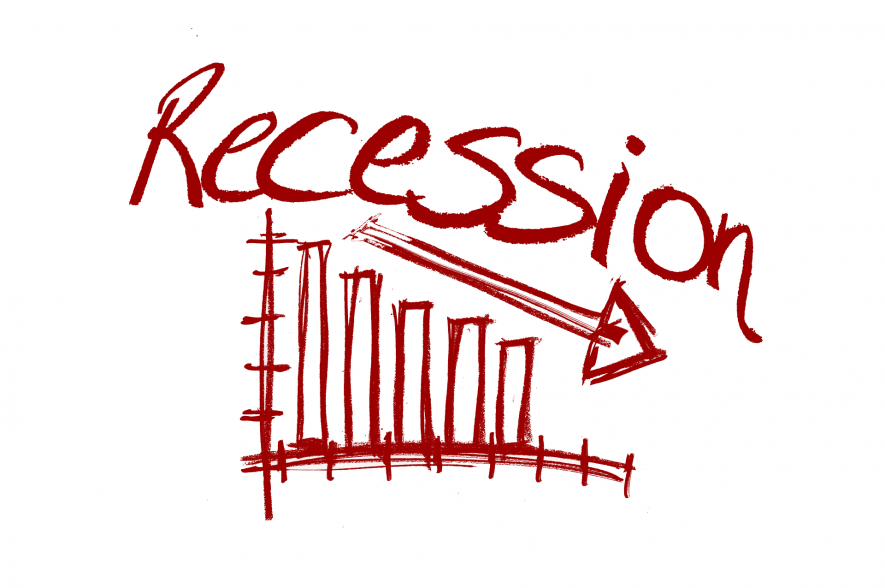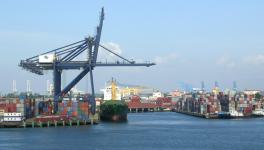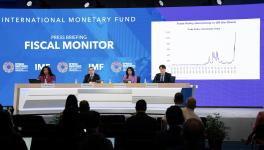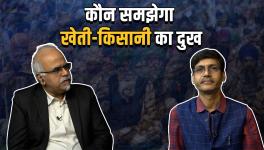The Gathering Storm Clouds of Recession

Representational image. | Image Courtesy: Medium
The Index of Industrial Production (IIP) has, for the first time since June 2013, contracted in absolute terms by 0.1% in March 2019 compared with a year ago. This comes on top of a mere 0.07% increase in February, a 1.7% increase in January, a 2.6% increase in December, and a 0.3% increase in November. Industrial growth, in short, has been slowing down for some time now and the latest figure only reaffirms this trend emphatically.
Within industrial production, the manufacturing sector which has a weight of 77.6%, declined by 0.4% in March compared with a year ago, and this arose because of a decline of 8.7% in capital goods, a decline of 5.1% in consumer durables, a decline of 2.5% in intermediate goods and a rise by 0.3% in consumer non-durables. For 2018-19 as a whole, the growth in the IIP was a mere 3.6%, which is lower than the 4.4% of 2017-18; but it is in the later months of the financial year that the recession has gathered momentum.
This recession in a sense is inevitable. It is a symptom of the fact that the Indian economy, like other economies of the world, is caught in a limbo, with neoliberalism having reached a dead-end and no other economic regime based on the home market having come to replace it.
The world economy has been witnessing a slowdown which has now begun to affect economies like India and China via a lower growth rate of exports. But the lower growth rate of exports is not even partially counterbalanced by any stepping up of growth of the domestic market. On the contrary, the home market is also shrinking at the same time because of rural distress, because of the second-order effects of the slowing down of export growth, and also because of the growing weight of non-performing assets, also on account inter alia of the slowing down of industrial growth, which squeezes credit availability for undertaking larger expenditure. The slowing down of export growth, in other words, far from being counterbalanced, is further compounded by a shrinking of the home market.
This is clear from the fact that the consumer durables sector has shrunk and the consumer non-durables sector has remained virtually stagnant in April compared with the previous April. And the contraction in capital goods output, which comes on top of a contraction that had already occurred in February, suggests that investment in the economy is falling.
The Reserve Bank of India has already twice announced cuts in the Repo Rate, of 25 basis points each; but this is unlikely to make much difference. What is holding up credit disbursement is not so much the cost of credit as its availability, which has got impaired by its being locked up in non-performing assets. Of course, even if credit was easily available, it is not clear how much of a difference that would have made, but with credit availability itself being subject to some tightness, a mere lowering of the rates will not increase credit disbursement to any significant extent.
What is needed is fiscal expansion, but here we come to the nub of the matter. In this election season, various political parties have been promising larger transfers to the rural poor, which would certainly expand the home market and cause some revival in industrial output. The Narendra Modi government’s budget had promised Rs 6,000 per capita annually to about 12 crore persons belonging to small peasant families. The Congress went much further in its election manifesto. It promised under its NYAY scheme to give Rs 6,000 per month, i.e., Rs 72,000 per year, to the bottom quintile of the households, which is about five crore households.
While these schemes would help expand the home market, the question is how the resources can be raised. Taxing the rich, especially through wealth taxation, which is virtually absent in India and which can, therefore, raise substantial revenues precisely because it is absent in India, is the obvious way of mobilising resources; but this is going to be stoutly opposed by international finance capital.
Likewise if these schemes are even partially financed by an increase in the fiscal deficit, then the magnitude of the fiscal deficit will exceed its target of 3.4% of GDP, and this is likely to lead to a downgrading of India’s credit-rating, making it extremely difficult to finance the current account deficit on the balance of payments. This problem will become even more acute as India has decided to stop buying oil from Iran, which is cheaper than the spot oil prices that India would otherwise have to pay.
Oil prices are already firming up, which will widen the current deficit; if the US sanctions against Iran are also taken into account, then the current deficit will widen further. And if in addition the fiscal deficit figure exceeds its target, then the inflow of finance will dry up as India’s credit rating will drop, and there will be little hope of meeting this deficit in the normal course.
We, therefore, are in a bizarre situation. If the government tries to overcome the gathering recession, then it will find it difficult to meet the current account deficit; on the other side, if it does nothing to counter the recession, then the unemployment situation which is already grim, will become even grimmer.
The grimness of the unemployment situation has been hidden from public view because the government has simply refused to publish any data on unemployment for over two years. But a leaked report from the Statistical Office of the government puts the unemployment rate at 6.1%, which is the highest in the last 45 years. The Centre for Monitoring the Indian Economy has put the unemployment rate at 7.6% in April. It should be noted that while movements in the unemployment rate give an indication of the direction of movement of unemployment, the rate itself does not capture the magnitude of the problem. This is because employment rationing in India takes the form of most people being employed for only a part of the time, rather than some being fully employed and others being fully unemployed.
Clearly, therefore, the government will have to do something to ameliorate unemployment; but doing anything will destabilise the balance of payments within the neoliberal paradigm. The neoliberal chickens in short are finally coming home to roost.
Since neoliberalism itself is running into a dead-end, this should have been an ideal time to disengage from it by introducing trade and capital controls. As the United States is introducing trade controls already, India could have introduced such controls in the shadow of US action. And with such controls in place, it could have introduced a wealth tax, and an inheritance tax. It could then have delivered on its promise of making transfer payments to the poor households, and thereby expanded the domestic market, and followed it up by taking steps to increase the rate of growth of foodgrain production. A drying up of financial inflows in such a situation would not have made much of a difference to the country’s ability to finance its current account deficit which would have narrowed anyway because of trade controls.
But the Modi government appears to have little awareness of the fact that neoliberalism has reached a dead-end. The industrial recession, therefore, is likely to accentuate.
Get the latest reports & analysis with people's perspective on Protests, movements & deep analytical videos, discussions of the current affairs in your Telegram app. Subscribe to NewsClick's Telegram channel & get Real-Time updates on stories, as they get published on our website.
























